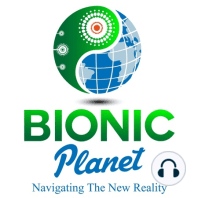35 min listen

025: Trademarks, Gateways, And Global Climate Talks
FromBionic Planet: Reversing Climate Change by Restoring Nature
025: Trademarks, Gateways, And Global Climate Talks
FromBionic Planet: Reversing Climate Change by Restoring Nature
ratings:
Length:
45 minutes
Released:
Nov 15, 2017
Format:
Podcast episode
Description
Towards the end of summer, climate negotiators learned of three trademark applications that were filed in May of this year. One was for the logo “REDDPLUSX”, which is described as a carbon credit brokerage. Another was for the logo “RRU”, which are proposed carbon credits generated by saving or supporting forests under the Paris Agreement. But it was the third, for the logo REDD+, that raised eyebrows across the climate community. It raised those eyebrows because scores of organizations already use the acronym “REDD+” to describe activities that reduce greenhouse gasses by saving or reviving endangered forests. The acronym is generally spelled out as “‘reducing emissions from deforestation and forest degradation, and the role of conservation, sustainable management of forests, and enhancement of forest carbon stocks”, and it describes as set of mechanisms that generate “reduction units”, which might one day be worth billions of dollars as the world implements the Paris Climate Agreement. The trademark applications were filed by the Coalition for Rainforest Nations (CfRN), which is a New-York-based entity that promotes forest-carbon initiatives in roughly two dozen countries, and the applications came to light just as one of those countries, the Democratic Republic of Congo (DRC), proposed a new “Gateway” for handling REDD+ Reduction Units – which, not coincidentally, is what “RRU” stands for. CfRN executive director Kevin Conrad says he’s just trying to provide clarity in a process that often seems chaotic, but critics say the proposals replicate mechanisms that are already on the table, and some see an effort to control a process that’s designed to be open and inclusive. Whatever the motives for their creation, the proposals offer insight into the issues being negotiated here in Bonn, so let’s take a quick look. Who Uses the REDD+ Acronym? REDD+ began as an experiment in 1988, when US electric company Applied Energy Services (AES) wanted to see if it could reduce its carbon footprint by helping poor farmers in Guatemala manage their land more sustainably (for the full story, see “REDD Dawn: The Birth Of Forest Carbon”). The acronym then was “AD”, for “avoided deforestation”, and the concept evolved over the decades as NGOs continued to experiment with the science. Eventually, the phrase shifted to “Reducing Emissions from Deforestation”, then to “Reducing Emissions from Deforestation and Degradation”, and finally to one that includes a broader range of land-use activities. At the same time, standard-setting bodies like the Verified Carbon Standard (VCS) and the American Carbon Registry emerged to provide ways of generating carbon offsets by determining which forests were endangered and which procedures can be used to save them. Within the United Nations Framework Convention on Climate Change (UNFCCC), however, REDD remained on ice until 2005, when Conrad, as lead negotiator for Papua New Guinea, wrangled it back onto the agenda at Climate Talks in Montreal (COP 11). At the 2013 climate talks in Warsaw, the UNFCCC agreed on the Warsaw Framework for REDD+, which is a cluster of agreements on how to develop REDD+ programs at a national or sub-national level and pay for results. That rulebook was enshrined in the Paris Agreement – which, by the way, rarely uses the acronym but instead spells it out in most cases. The acronym is, however, used by carbon standards like VCS and Plan Vivo, as well as by sub-national governments like those of the US state of California and the Mexican state of Chiapas – and that, says Conrad, is a problem. Shades of REDD In an interview for the Bionic Planet Podcast, scheduled to be posted today, Conrad said that REDD+ should only be used to describe programs that are embedded into national carbon accounting initiatives under the Paris Agreement. “The REDD+ description under the UNFCC is that you have to have a national plan, you have to have a national monitoring system, you have to have a reference
Released:
Nov 15, 2017
Format:
Podcast episode
Titles in the series (94)
011 New Age of Radical Transparency: New Tools for Tracking Deforestation by Bionic Planet: Reversing Climate Change by Restoring Nature